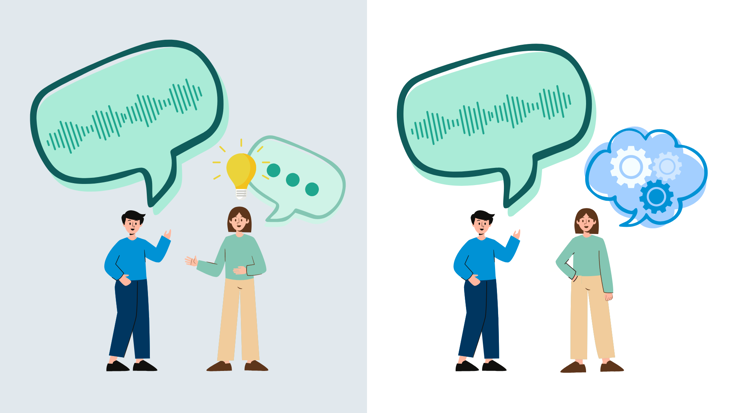Listening to speak or listening to understand?
Dr Paul Prichard | December 2024
Read more from the Education and Learning team Reflections on Relational Practice blog series:
- What is relational practice and why is it important?
- 'Hard to reach' families or difficult to access services?
- Understanding the broader context of individual families
- How our interpretation of experiences might get in the way of helping families
Most of us in human service professions believe we are generally good at listening. However, through my work with parents and other practitioners, I have arrived at the slightly more humbled realisation that I still have some way to go in the listening department.
My own slightly disturbing discovery is that there are different types of listening, and to do it well is fundamentally complex. The most common listening we all experience we can think of as ‘social listening’, whereas the type of listening those of us in helping professions would aspire to is known as ‘deep listening’.

Social listening
Let’s unpack the concept of ‘social listening’, which requires little skill or attention. All that is required is to keep my colleague, family member or friend talking until they either come to a pause or I excitedly come in over the top of them with my own story. In effect, I am listening with a view to speaking. The backwards and forwards motion in this scenario may continue across various unrelated topics generating humour, interest and triggering other experiences that are openly shared with each other. This type of free-for-all is often acceptable in social settings but may be less appropriate in professional helping situations.
What is involved in really listening to what someone is telling us?
The other type of listening is ‘deep listening’. Truly listening to what others are telling us is a sophisticated task requiring the listener to exercise a variety of skills and qualities, to enable the talker to say what needs to be said. Another way of thinking about this type of listening is listening with a view to understanding. Let me paint a picture to illustrate this.
A parent is having trouble with something, and a practitioner offers to help them. In the first instance, the practitioner listens deeply, exercising several verbal and non-verbal skills that enable the parent to:
- Think about the issue
- Talk the issue through out loud
- In the process, hear, perhaps for the first time, their unique story being spoken.
Respectful help-giving may sometimes only need to involve listening
When we hear our own problems out loud, we can often understand it in a deeper way and might even arrive at our own useful solutions. In this instance, the practitioner doesn’t need to do anything other than listen respectfully and deeply. Under the surface, the practitioner has worked extremely hard to give themselves completely over to the task of listening to convey their interest, empathy, warmth, and encouragement. Where necessary, the practitioner might also use the skills of summarising and paraphrasing (which will be addressed in a future blog), and occasionally ask carefully framed questions designed to understand more clearly what it is the talker is meaning or saying.
There is an important caveat in relation to asking questions.
We need to ask ourselves: ‘Is the question I am about to ask designed to better understand the issue, or am I wanting to simply satisfy an intrigue that I have?’
The latter can run the risk of hijacking the story away from where the talker would have chosen to go. For example, sometimes I find myself being captivated by one small part of a story and have a burning desire to ask a question in relation to it. By giving in to the temptation I then begin to direct the storyteller to a place I want them to go, rather than deeply listening to the story as they choose to tell it.
Some years ago, I had the opportunity to learn for the first time about the Aboriginal concept of ‘Dadirri’, a word from the Ngan'gikurunggurr and Ngen'giwumirri languages from the Daly River region, south of Darwin. Dadirri Disability Services refers to Dadirri as ‘…inner deep listening and quiet still awareness and waiting’. Dadirri helps people to ‘…explore and learn from the ancient heritage of Aboriginal culture, knowledge and understanding’ (Korff, 2018). It makes sense that in ancient Aboriginal cultures, without written records, that the passing on of stories and knowledge relied heavily on deep listening.
Perhaps as we continue our learning journeys towards being effective and respectful listeners of those we aim to serve, we might benefit from reflecting on the skills and qualities that help us to listen deeply to the unique stories we have the privilege of hearing.
Contact
If you would like more information about deep listening practices you can contact us at [email protected]
We provide education and learning for practitioners on a variety of topics and can tailor workshops to meet the specific needs of your service.
References
Dadirri Disability Services. [Sourced 23/09/2024]
Korff, J. (2018). Aboriginal Culture Essentials.
Source: Deep listening (dadirri) - Creative Spirits.
[Sourced 23/09/2024]
